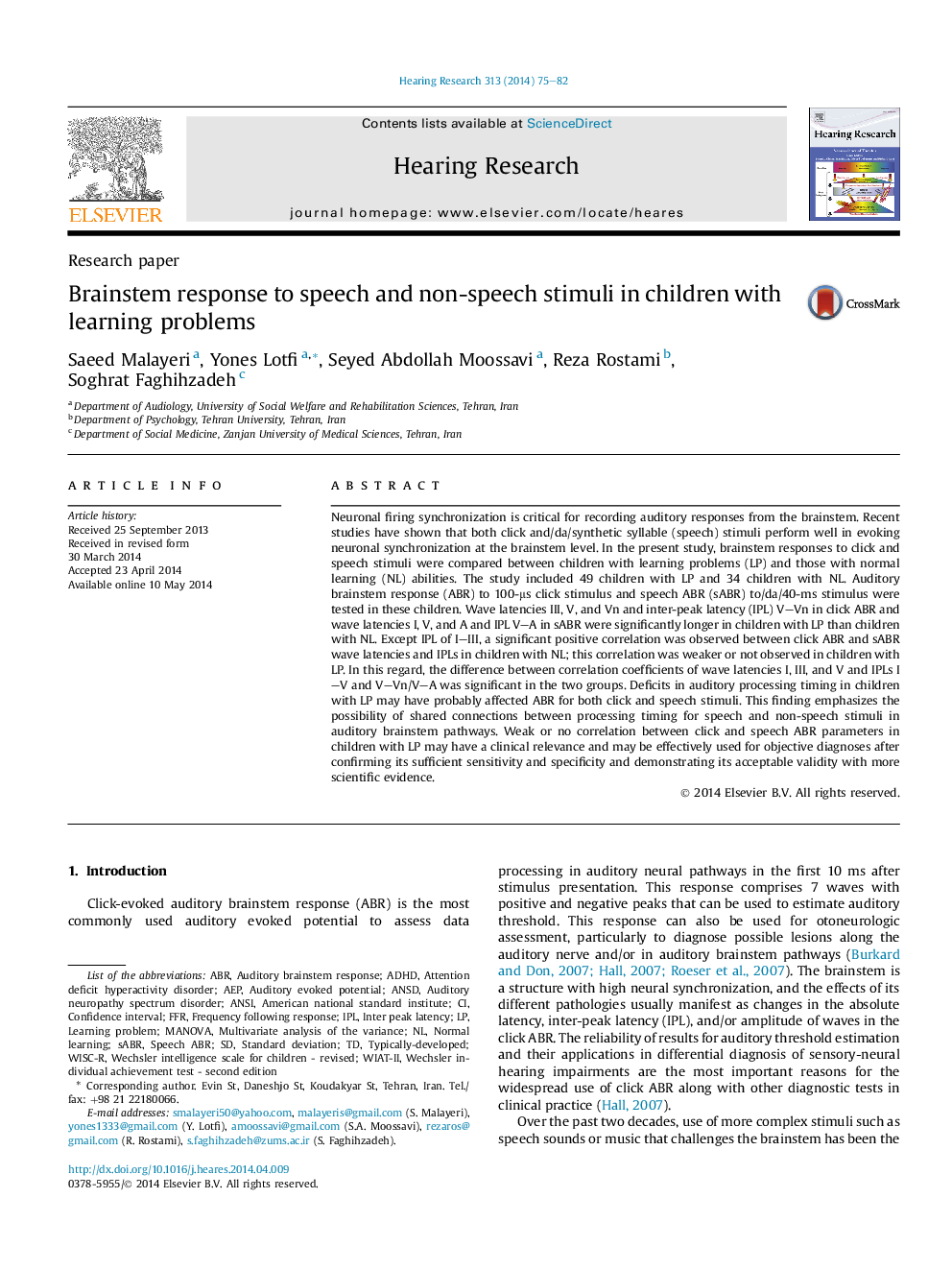| Article ID | Journal | Published Year | Pages | File Type |
|---|---|---|---|---|
| 4355154 | Hearing Research | 2014 | 8 Pages |
•Likelihood of abnormal processing timing for both click and speech ABR is high in LP.•The neural encodings of non-speech and speech stimuli may have shared connections.•Weak correlation between timing components of stimuli may has clinical significance in LP.
Neuronal firing synchronization is critical for recording auditory responses from the brainstem. Recent studies have shown that both click and/da/synthetic syllable (speech) stimuli perform well in evoking neuronal synchronization at the brainstem level. In the present study, brainstem responses to click and speech stimuli were compared between children with learning problems (LP) and those with normal learning (NL) abilities. The study included 49 children with LP and 34 children with NL. Auditory brainstem response (ABR) to 100-μs click stimulus and speech ABR (sABR) to/da/40-ms stimulus were tested in these children. Wave latencies III, V, and Vn and inter-peak latency (IPL) V–Vn in click ABR and wave latencies I, V, and A and IPL V–A in sABR were significantly longer in children with LP than children with NL. Except IPL of I–III, a significant positive correlation was observed between click ABR and sABR wave latencies and IPLs in children with NL; this correlation was weaker or not observed in children with LP. In this regard, the difference between correlation coefficients of wave latencies I, III, and V and IPLs I–V and V–Vn/V–A was significant in the two groups. Deficits in auditory processing timing in children with LP may have probably affected ABR for both click and speech stimuli. This finding emphasizes the possibility of shared connections between processing timing for speech and non-speech stimuli in auditory brainstem pathways. Weak or no correlation between click and speech ABR parameters in children with LP may have a clinical relevance and may be effectively used for objective diagnoses after confirming its sufficient sensitivity and specificity and demonstrating its acceptable validity with more scientific evidence.
